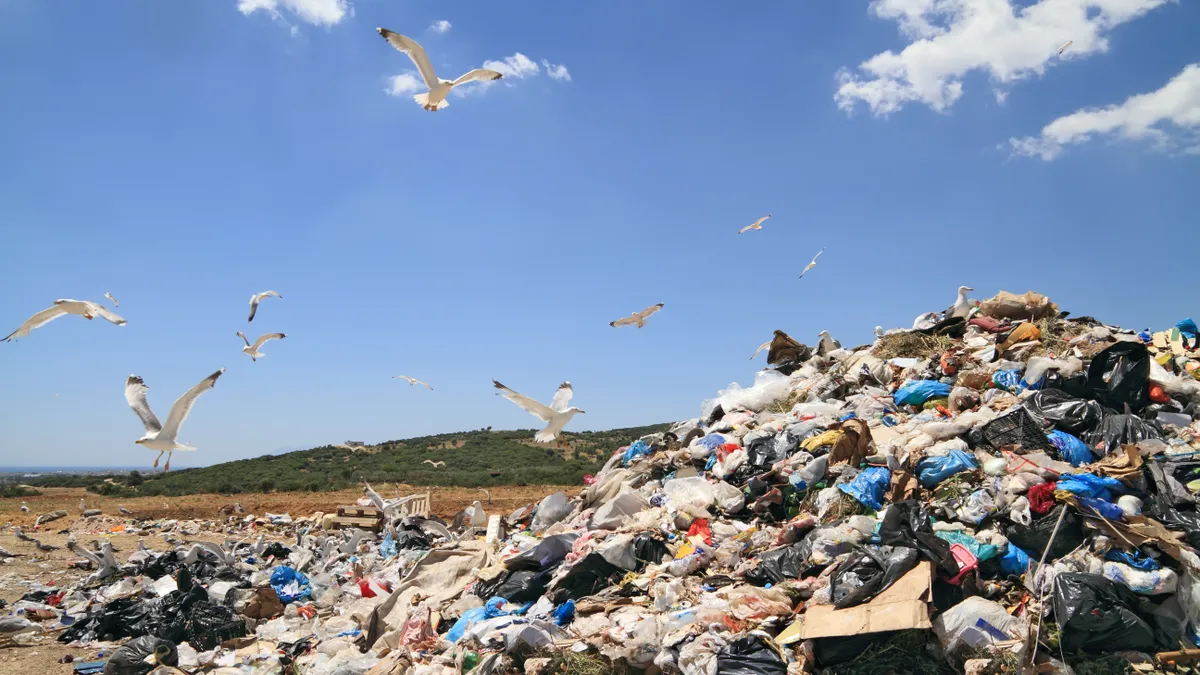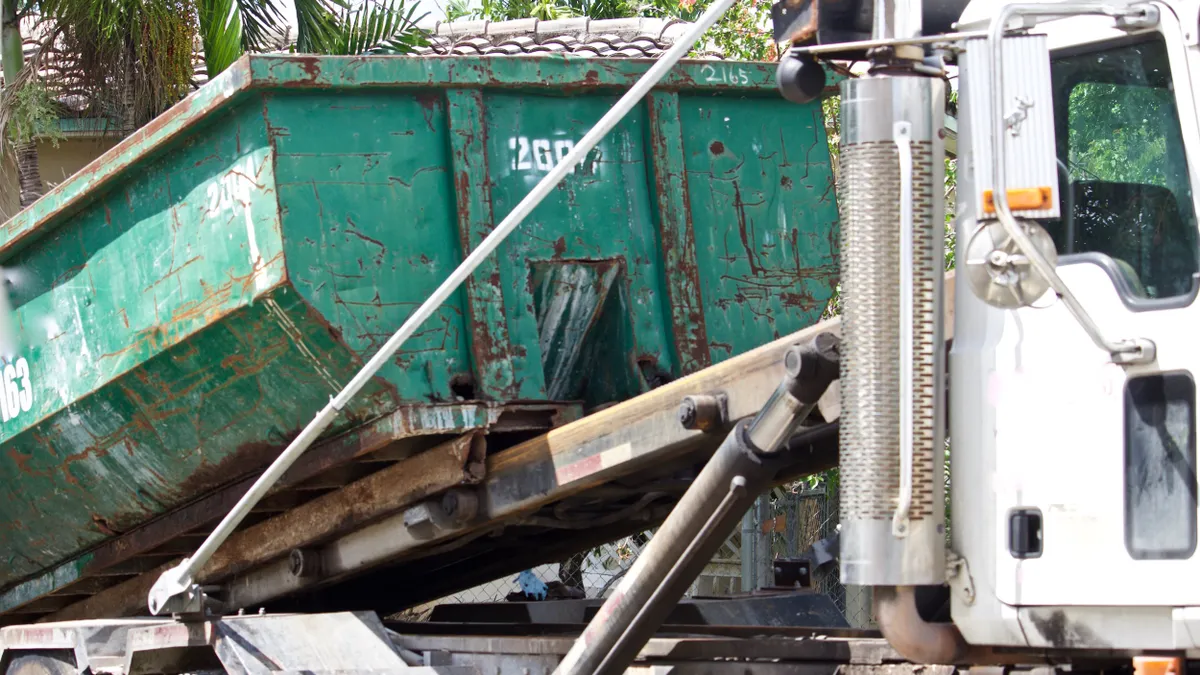Dive Brief:
- The Environmental Research & Education Foundation (EREF) released a new report titled "Municipal Solid Waste Management in the U.S.: 2010 & 2013" which it says is the first to use a bottom-up methodology that assesses individual tonnage from more than 9,000 facilities.
- Using this method, EREF found that 347 million tons of municipal solid waste (MSW) were generated in 2013 as compared to the EPA's estimate of 254 million tons. The report found that 64% of this waste was managed at landfills, 21% was recycled, 9% went to waste-to-energy facilities and 6% was composted.
- Between 2010 and 2013, the amount of MSW being composted increased by 10% to 21.3 million tons. About 70% of this material was yard waste.
Dive Insight:
This latest entry in EREF's Data & Policy Program indicates that MSW tonnage is higher and recycling rates are lower than previously estimated by the EPA. According to the report, this is because the EPA uses a top-down method that links production, import and export values with estimated product life to determine waste generation. Using a third method, BioCycle's biennial "State of Garbage" report takes a middle-up approach with data from state agencies.
By drilling down to the facility level, EREF has highlighted more exact trends about facility ownership, recycling capabilities, waste stream flow and other factors which provide valuable insight into how the U.S. is handling its MSW. This reflects the trend toward capturing more exact data which many research organizations and technology companies are working on.
The need for more data around organic waste generation is a particular focus right now as the industry works toward helping meet the federal goal of halving food waste by 2030. A partnership convened by the World Resources Institute debuted a new "Food Loss and Waste Accounting and Reporting Standard" this summer and many organizations, including EREF, are working on individual projects to get more details on how much food is being wasted in certain categories.















